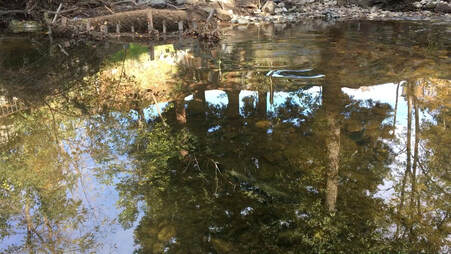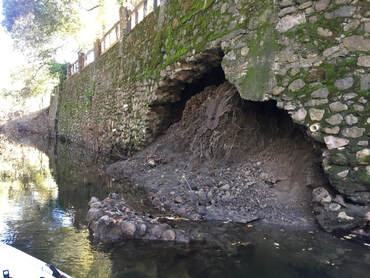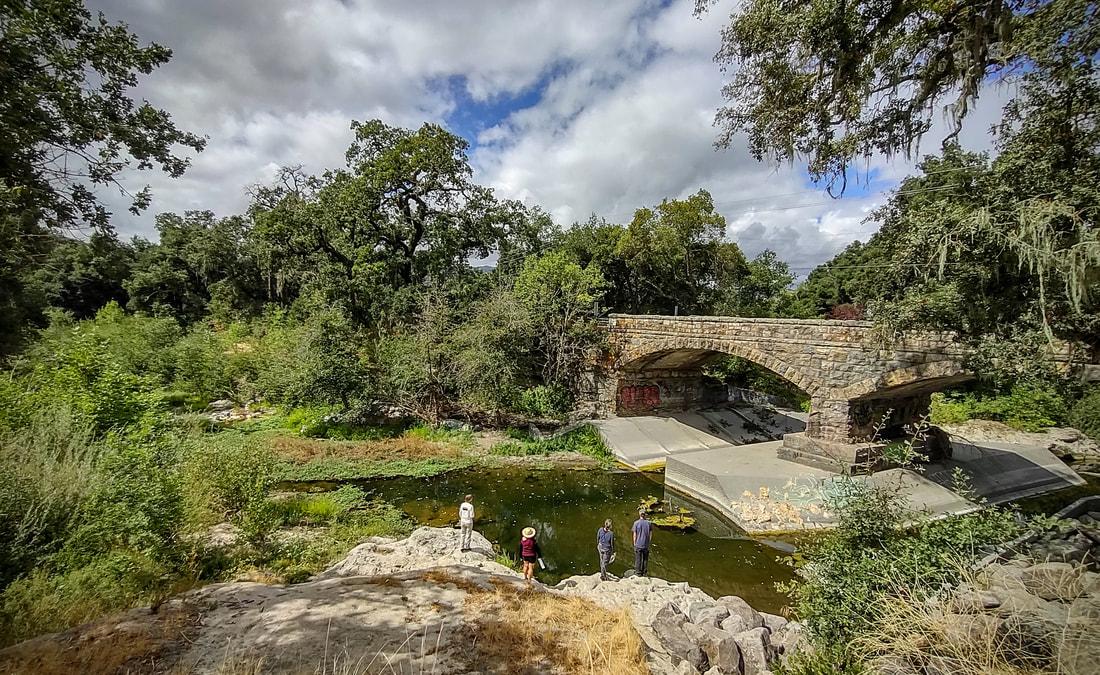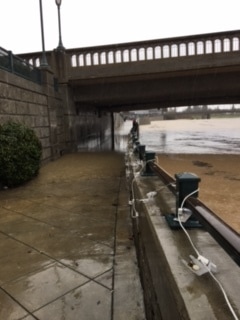Header photo by: Lowell Downey
Fresh Water Harmful Algae Bloom Monitoring Team/ FHAB
ICARE in collaboration with the San Francisco Bay Regional Water Quality Control Board/SFBRWQCB established in 2023 a Freshwater Harmful Algae Bloom/FHAB Monitoring Team whose task is to monitor, sample, test and report to the local authorities if FHABs have been detected in the Napa River. This FHAB Monitoring Team is composed of volunteers from ICARE (seen herein) that will respond to sitings of FHAB and will monitor favorite swimming areas in the Napa River should FHAB form in the water column. FHAB can appear suddenly without warning and can cause, adverse health problems for humans and pets that range from skin rash and stomach upsets. FHAB can also cause neurological and hepatic illness and even death if algal toxins are directly ingested. Therefore, ICARE will again in 2024 monitor three sites in the Napa River watershed; Yountville Eco-Preserve, Pioneer Park and Alston Park for FHABs. If these sites produce positive results at our laboratory then the SFBRWQCB and ICARE will immediately close these areas to swimming with signage and press releases to warm the public to stay out of the water.
Click on links below for more information
https://mywaterquality.ca.gov/habs/where/freshwater_events.html
https://www.nrdc.org/stories/freshwater-harmful-algal-blooms-101
Click on links below for more information
https://mywaterquality.ca.gov/habs/where/freshwater_events.html
https://www.nrdc.org/stories/freshwater-harmful-algal-blooms-101

From Left to Right: Chris Malan/ED ICARE;
Cari Conley, Val Wolf,
Alyx Howell-all volunteer for the FHAB Monitoring Team
Cari Conley, Val Wolf,
Alyx Howell-all volunteer for the FHAB Monitoring Team
The Dying Napa River
|
|
Video of Dry Napa river
|

October 27th 2012
Our rare October kayaking trip where the salmon were spawning from Calistoga to Dunweal ln.
Our rare October kayaking trip where the salmon were spawning from Calistoga to Dunweal ln.

This stone wall is eroding and covering salmon spawning habitat. The property owner is liable for this wall breakage. Napa County has been contacted numerous times over the past three years to begin problem solving regarding this huge bank failure.
Walt Ranch
Update for Walt Ranch- We won that campaign and now Walt Ranch is in a conservation easement see here:
We started meeting in living rooms in 2005 to organize our grassroots campaign against Walt Ranch due to the deforestation of 14,000 trees, habitat destruction for endangered species such as steelhead trout, bats, frogs and rare and special plants. This hundreds of acres of conversion to vineyards would have destroyed the water quality in Milliken Reservoir thereby risking water availability for the City of Napa. For over seventeen years we attended numerous public hearings, held rallies, wrote thousands of public comments and filed three lawsuits to stop this destruction. It all paid off! See here the outcome of our successful campaign to stop Walt Ranch:
We started meeting in living rooms in 2005 to organize our grassroots campaign against Walt Ranch due to the deforestation of 14,000 trees, habitat destruction for endangered species such as steelhead trout, bats, frogs and rare and special plants. This hundreds of acres of conversion to vineyards would have destroyed the water quality in Milliken Reservoir thereby risking water availability for the City of Napa. For over seventeen years we attended numerous public hearings, held rallies, wrote thousands of public comments and filed three lawsuits to stop this destruction. It all paid off! See here the outcome of our successful campaign to stop Walt Ranch:
Walt Ranch was owned by Katherine & Craig Hall and Brambletree LP, a Texas limited partnership. They proposed a vineyard development project or erosion control plan (ECP) in the Milliken Creek watershed above the Milliken Municipal Reservoir. This is a highly sensitive unique watershed and called a biological hot spot on the planet. This project was approved by the Napa County Board of Supervisors (BOS) following public hearings and an appeal. Living Rivers Council then filed a lawsuit after the BOS failed to properly abide by the California Environmental Quality Act (CEQA) after abusing their discretion by not protecting critical habitat for steelhead, failing to survey for endangered frogs and the pollution of Milliken Municipal Reservoir by vineyard runoff of toxic chemicals. This ECP involves; deforestation of 14,000 trees, pumping 144 acre feet per year (47 million’s gallons) of groundwater from a depleted aquifer, and erosion into the Milliken Municipal Reservoir. Additionally, neighbors worried about this project actually being the beginning of an expansion of the vineyard development into 35 wineries and mansion estates in steep slopes and narrow roads.
The Napa River and the Clean Water Act Total Maximum Daily Load/TMDLs and Limits on Pollution Allowed to Enter a Waterbody.
The Napa River is listed as a polluted waterbody according to the Clean Water Act/CWA due to: sediment, nutrients, pathogens, PCBs, Cloridane and Mercury. These pollutant listings must have limits put on their discharge to the Napa River from the source causes and implementation clean up plans initiated by the San Francisco Bay Regional Water Quality Control Board/SFBRWQCB more information can be found here:
https://www.waterboards.ca.gov/sanfranciscobay/
https://www.waterboards.ca.gov/sanfranciscobay/
Napa River Flood 2016/2017
Oxbow flood project bypass in action, January 8th 2017..
Milliken Creek class III stream (December 2016). Muddy water from the vineyard were farmed through the class III streams. Class III streams have intermittent flows but are vital to a healthy watershed.








